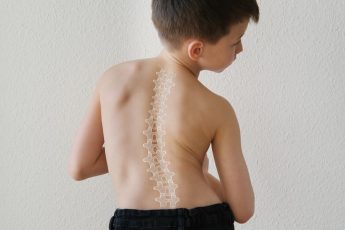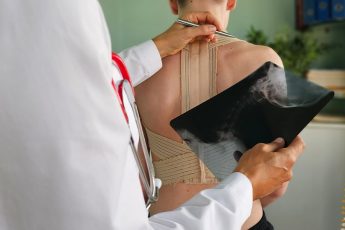
Successful Lumbar Scoliosis: Making Sense of and Handling Spinal Curvature
Lumbar scoliosis is a condition in which one is faced with unusual lateral curvature of the spine in the lumbar region or lower back. It is among the presentation forms of scoliosis that adolescents and adults can present, and it typically causes pain, restricted movement, as well as postural deformity if not treated.
Adolescent lumbar scoliosis is most commonly idiopathic—happening without an apparent cause—most frequently during the phase of accelerated growth. In adults, most commonly as degenerative, spine changes which occur during aging, e.g., deterioration of discs, osteoarthritis, or spinal instability.
Early detection of the signs—i.e., asymmetrical hips, back pain, or the obvious slant in stance—must occur to diagnose and effectively treat the condition. Through whatever means—conservative therapies such as physical therapy or, in the most severe of cases, surgery—lumbar scoliosis must be treated in order to maintain spinal integrity and quality of life.
Causes and Risk Factors:
The pathogenesis of lumbar scoliosis varies with age and health. It is usually idiopathic in children but, in adults, may be secondary to degenerative disc disease, arthritis, or previous spine surgery.
Other predisposing conditions that may be possible are:
- Family history of scoliosis
- Osteoporosis or other bone-destructive illnesses
- Chronic poor posture
- History of previous spinal trauma or spine surgery
- Asymmetric leg lengths or muscle weakness
Understanding the causative factor is also required to decide on the correct course of management.
Identification of the Symptoms:
Lumbar scoliosis can present with a range of symptoms depending on the severity of the curvature. Lumbar scoliosis can be asymptomatic altogether, and some will have considerable distress.
Some of the symptoms are:
- Lower back pain, predominantly on one side
- Stiffness or tightness of hip and back
- Concealed curvature of lower back
- Tingling or numbness of legs due to compression of nerves
- Muscle fatigue following prolonged standing or walking
- Symmetrical or asymmetrical shoulders or waist
Early detection of symptoms results in a better treatment course and prevents further complications of the condition in the long term.
Diagnosis of Lumbar Scoliosis
If lumbar scoliosis is suspected, medical professionals start with a physical examination. A mere observation of the posture and spinal alignment can provide early indications. Imaging studies such as X-rays, MRI, or CT scans are employed for diagnostic confirmation. These machines help to identify the degree of the spinal curve and potential complications such as nerve compression or disc degeneration.
Cobb angle on X-rays is most commonly utilized to measure how severe scoliosis is. More than a 10-degree curve is typically scoliosis, and the treatment will be based on how large the curve is and whether or not it’s getting larger.
Non-Surgical Treatment Options:
Most can easily be managed by not having surgery. Nonsurgical treatments are designed to be pain-relieving, maintain the flexibility of the spine, and stop or prevent the development of the curve.
Physical therapy is the cornerstone of treatment for scoliosis. It involves specific exercises that strengthen muscles in the trunk, correct the posture, and enhance flexibility. Exercises are made to stabilize the spine and end pressure on the curved area.
Other non-operative treatments can include:
- Chiropractic manipulation and manual therapy
- Pain managing therapies
- Bracing in some disorders
- Affording of heat or ice packs to abate inflammation
- Potentially, correct posture techniques
Each treatment plan is customized according to the patient, based on lifestyle, severity of curvature of the spine, and overall health.
When Is Surgery Needed?
Surgery may be recommended when the spinal curve is very severe (usually greater than 40 to 50 degrees) or when non-surgical treatment does not reduce symptoms. Surgery may also be necessary if scoliosis is causing symptoms of nerve involvement, such as weakness or numbness in the legs.
The most common procedure for lumbar scoliosis is spinal fusion, where two or more vertebrae are fused permanently together. This stabilizes the spine and also corrects the curve. Other procedures, such as decompression, are applied where there is nerve compression.
Surgical methods advance, less intrusively and with better results of recovery. Patients are sometimes urged to sit down in front of a spine expert and go through all the options, risks, and benefits before a decision is reached.
Long-Term Management and Lifestyle
Treating lumbar scoliosis is not solely a matter of medical treatment. Habits and lifestyle also have a big role in keeping the spine healthy. A consistent exercise regimen, good posture, a healthy weight, and not lifting heavy objects can reduce stress on the spine.
Scoliosis check-ups done on a regular basis with the help of a medical professional consistently allow tracking of the condition along with early discovery of alterations. Whether the case is of moderate or acute scoliosis, being proactive helps in improving quality of life.
Conclusion
Lumbar scoliosis is a disorder that can be readily managed with the combination of proper diagnosis, therapy, and adjustments in lifestyle. Mild discomfort or more conspicuous, initial attention and customized treatment are essential in the promotion of beneficial results.
At the Scoliosis Center of Excellence at Adam Vital Hospital, our spine specialists offer comprehensive treatment to the lumbar scoliosis patient. With advanced diagnostic techniques, tailored treatment plans, and expert counseling, we assure you to stay in the best spinal health at all times.



